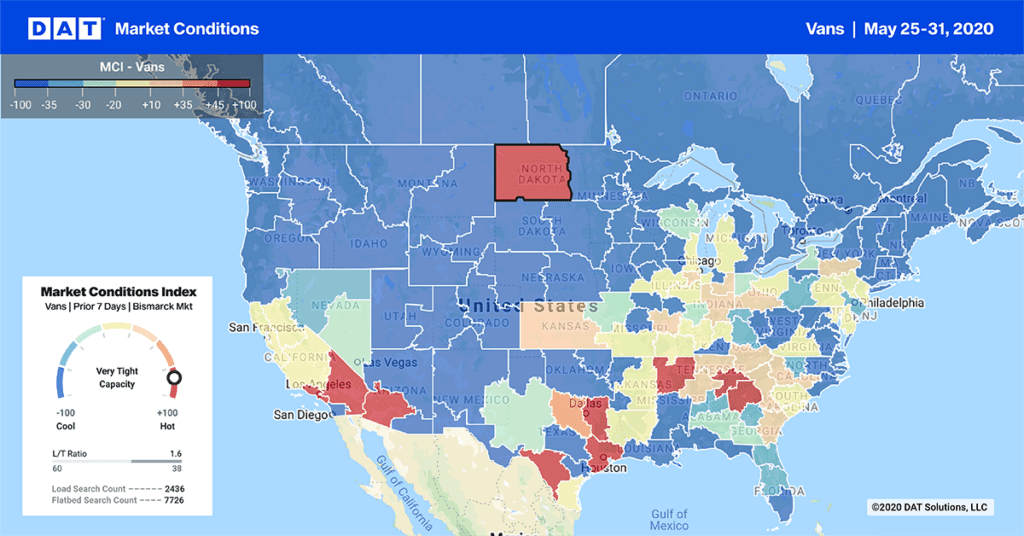Demand for dry van equipment continued to slide last week, along with rates. We saw it coming, as load-to-truck ratios took a nosedive during the previous week, but it’s still painful for anyone in transportation and logistics.
Carriers had enjoyed sky-high demand through late March, as consumers cleared store shelves of cleaning supplies, paper goods, and non-perishable food products. That demand continues, but it is offset by widespread closures of manufacturing and distribution operations for goods that are deemed non-essential during the COVID-19 crisis.

Unfortunately, the past week may well be a preview of our future, at least in the short term. The coming weeks or months will be incredibly confusing and difficult for the transportation industry overall. And that’s only the business side. There’s also the underlying fear we all share, that we or our loved ones could become seriously ill.
Not many lanes rates rose, and not by much
Sorry to be such a downer, but last week, even the good news wasn’t all that good. Rates rose on a handful of high-volume lanes, but not by much.
- Denver to Chicago rose 6¢ to $1.12 per loaded mile (ugh) and Chicago to Denver added 1¢ to $2.52
- Seattle to Medford, OR, paid 8¢ more last week at $2.58 and Medford to Seattle gained 11¢ to $2.89 — but there could be some deadhead.
- Stockton, CA, to Ontario, CA, rose 3¢ to $1.48, and Ontario to Stockton lost 4¢ to $2.49. Note that rates dropped sharply between Stockton and L.A.
- Houston to New Orleans gained a penny to $2.32 per mile, and New Orleans to Houston dropped 5¢ to $2.13. Not a great trade-off.
DAT’s Hot Market Map depicts tepid demand for spot truckload transportation. For daily and hourly updates, check these heat maps in DAT RateView or DAT Power.
Rates lose traction on most high-volume lanes
This rate report reminds me of that old joke about two restaurant patrons who complain about the food. The first says it tasted terrible, and the second one chimes in: “and the portions are so small!” That was last week in a nutshell: the loads were terrible, and there weren’t enough of them to go around.
Pretty much all the other lane rates slipped lower, and some fell by a lot. These are some of the biggest losers.
- Denver to Phoenix lost 14¢ to $1.24 per mile, and Phoenix to Denver dropped 4¢ to $1.31. As Orwell said in 1984, that’s “double-plus ungood.”
- Seattle to Salt Lake City plummeted 21¢ to $1.54 (to be fair, the previous week’s rates were atypically high for the season) and SLC to Seattle paid $1.92, down 6¢ from the prior week.
- Atlanta to Columbus fell 17¢ to $1.63, and Columbus to Atlanta held steady at $2.08. Rates also fell from Atlanta to Memphis, to Philadelphia, and to Chicago.
- Dallas to Houston lost 16¢ to $2.26 and Houston to Dallas added a penny to $2.04. Not great, but not awful. If you can do the 500-mile roundtrip in a day, you can still make money there.
- Memphis to Charlotte dropped 12¢ to $2.05 per mile, and Charlotte to Memphis fell 7¢ to $1.53. Rates fell on most lanes that connect freight hubs to each other in the Southeast.
The current trend will improve eventually, but it could be a while until that happens. For now, truckload rates may get worse before they get better.




